SLEGS Winter Meeting Report 2024
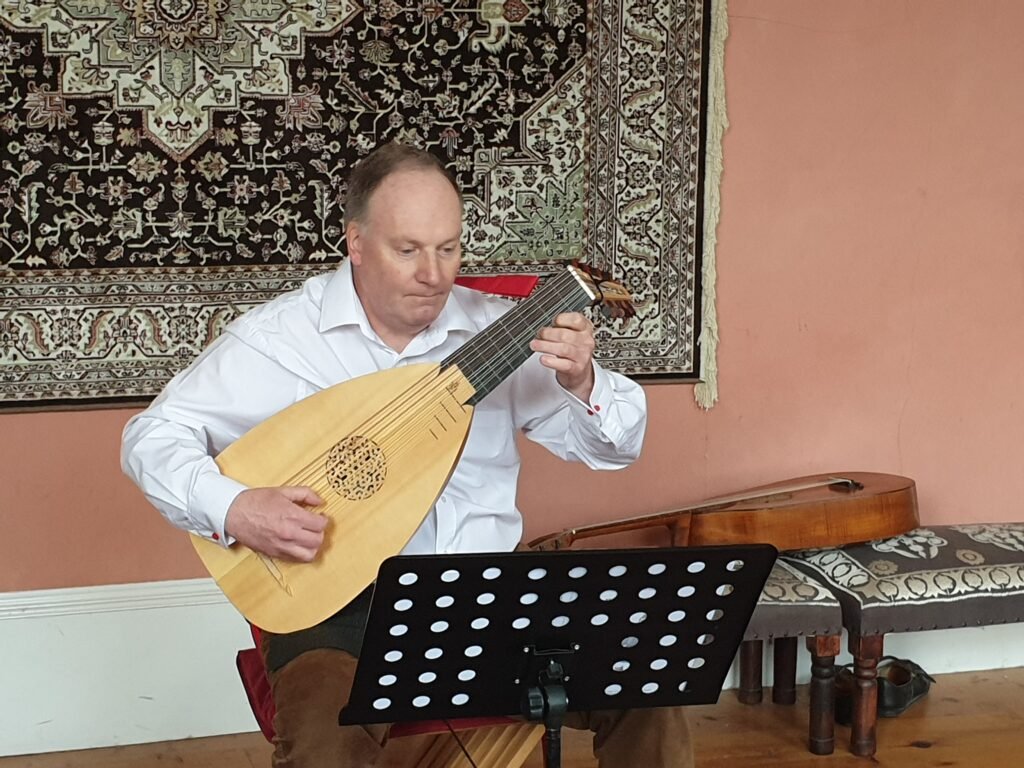
Our first meeting of 2024 was opened by Bruce Roth. He had brought along his eight-course
Barber and Harris lute to play two pieces from the Rowallan Manuscript: page 37, “A Scots
Tune”; and then page 36. The Scots Tune is a beautiful piece in Bruce’s hands as he
highlighted the melody and showed great proficiency with the left-hand fingering. Before
playing the second piece, Bruce told us that although it was probably written around 1620, it
has a certain 1960s-esque charm to it. After hearing the piece, we all agreed it would not be
out of place among The Beatles or Donovan!
Bruce also brought along a rather unique instrument as a discussion starter. After posting
photographs on our Facebook page he discovered that it is a lautengitarre or
wandelvogellaute from early 20th Germany. The shape of the instrument is influenced by the
shape of a coat of arms, called “wappen” shaped. It was made by PerlGold but needs a bit of
work on it, so Bruce will be taking it to Tony Johnson at some point.

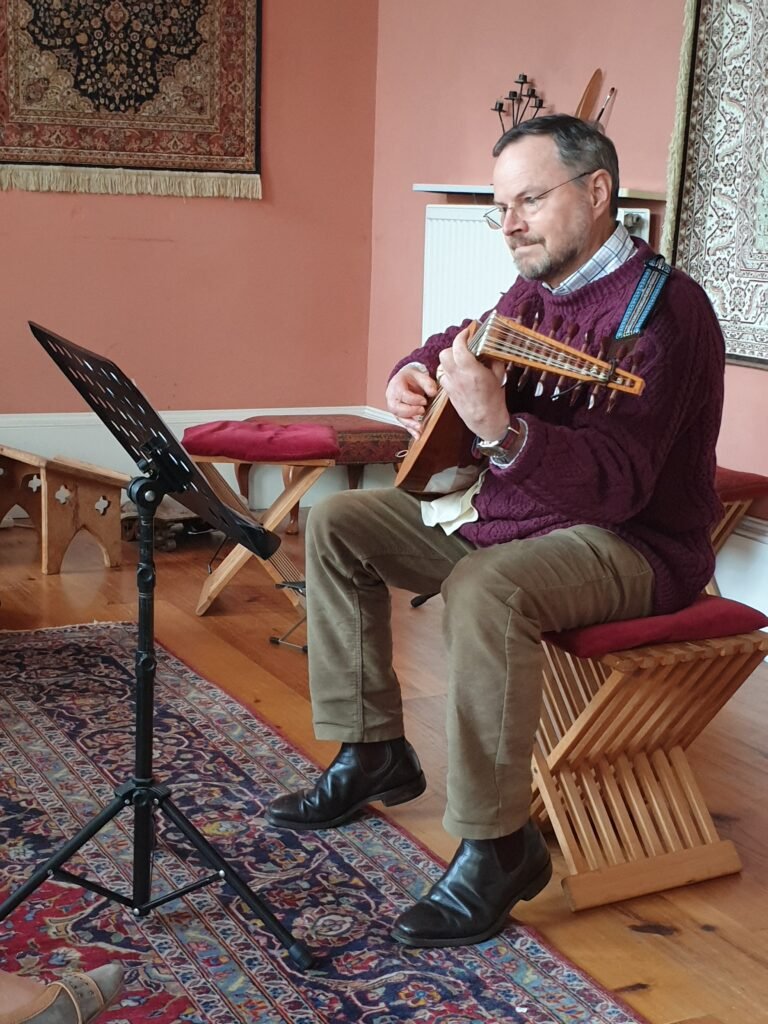
Alastair Merrill played second, having prepared two Fantasias by Francesco Da Milano, “Il
Divino”. With “Fantasia 40” Alastair demonstrated his skill with his “thumb under”
technique and did justice to what he feels is some of the finest renaissance music ever
written. Alastair also played “Fantasia 22”, a three-voice piece which he had rehearsed by
learning the voices in different pairings and then combined them to create the full piece. True
dedication to practice – well done Alastair!
Alastair also shared the good news that he has moved to the top of Tony Johnson’s waiting
list to have a new seven-course renaissance lute built, hopefully we will hear it at the next
meeting.
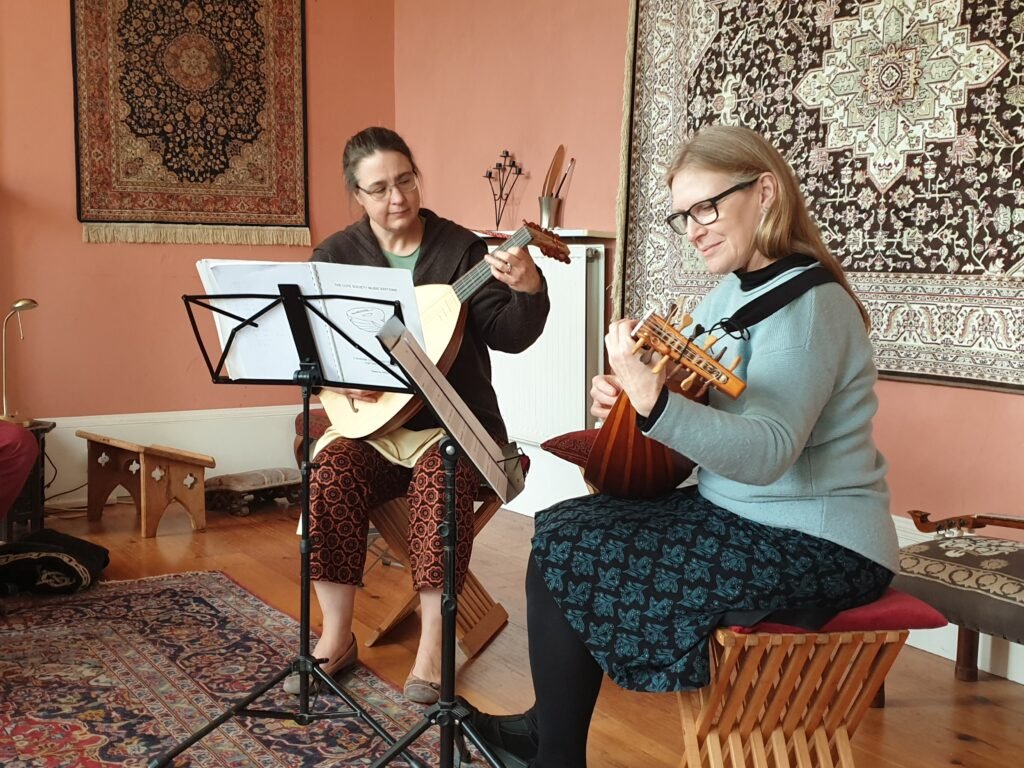
Third, we were treated to a wonderful duet by Joanna Allsop and Tanya. Joanna regards
Byrd’s “Ave Verum Corpus” as being one of the most beautiful vocal pieces ever written, but
that it may be more beautiful as a lute duet if only she had a few extra fingers and a spare
thumb. I think we can assure her that we all have the same thoughts about lute music
sometimes. Tanya took the bass and alto parts to provide an excellent foundation for Joanna’s
treble and tenor lines. As the interplay between the two lutes delighted our attendees, we
were all glad to be reminded that the instrument can work so well in duets and small consorts.

Up next was Glen Robertson, who played his four-course renaissance guitar built by Caius Hera.
The instrument is conveniently sized for tram travel but can also be surprisingly loud for its size. Glen played “Bransle no. 2” and a “Pavanne” by Guillaume Morlaye, with “N’aurez Vous Point de Moy
Pitie” by Adrian Le Roy in between. The pieces were lively and bright, played both with
finger plucking and decorative strumming. Glen also told us of how the instrument made its
way to Hawaii with Portuguese sailors, and then how later in time Portuguese vaqueiros
possibly brought the modern acoustic guitar to the islands. Which means the Portuguese may
have given the Hawaiians the guitar twice, and both times they gave it a uniquely Hawaiian
tradition.
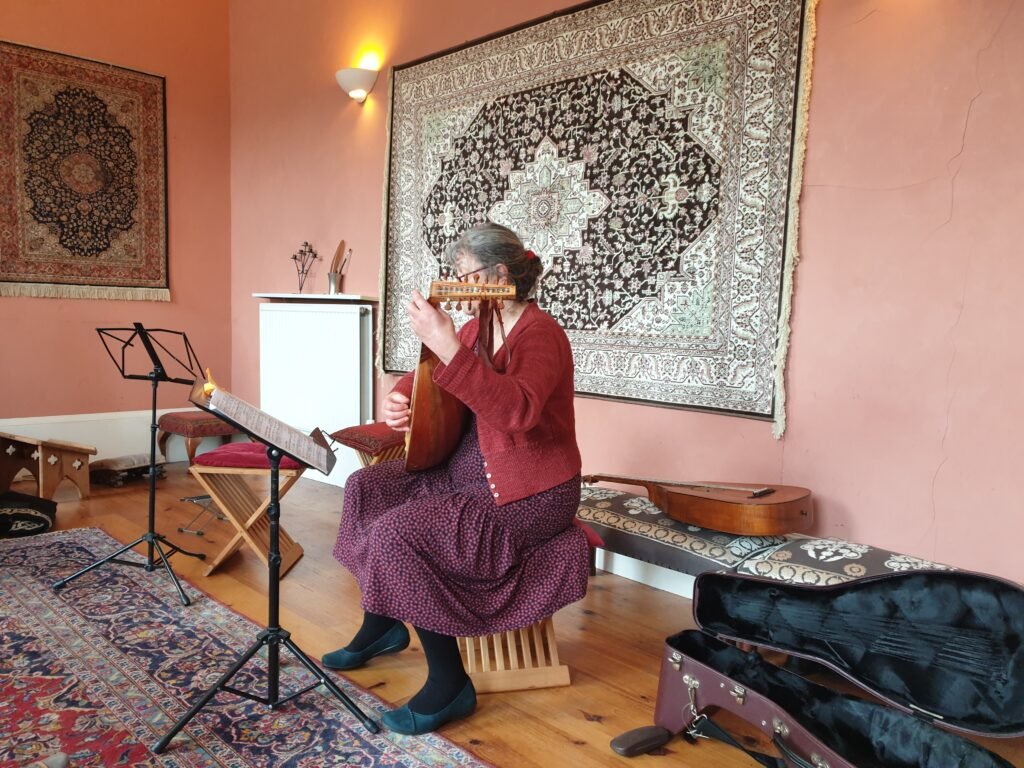
Luisa McMinn performed fifth, on her seven-course Barber and Harris lute. Having in the
past played to us on her theorbo, and viol, Luisa is certainly a multitalented musician! Firstly,
she played a “Coranto” from the Rowallan Manuscript, which even at a gentle tempo still had
us tapping our toes. We then heard “Elslein Liebstes Elslein Mein” by Neuslider. The tune
sounded very sweet and tender under Luisa’s fingers. We are all looking forward to seeing
what instrument Luisa plays at the next meeting.

Joanna had then switched from her renaissance lute to her baroque lute. Both of her lutes
were built by her father. This instrument has a formidable thirteen courses, and has recently
been refretted to equal temperament. Joanna played a “Minuet in G Minor” by J.S. Bach
which was transcribed by Wilfred Foxe. This piece is particularly representative of how
dramatic the Baroque instrument can sound. Joanna managed to find her way around the
diapasons while letting the melodies sing on the high strings. We were then treated to a
“Pavanne en Rondeau” by Jacques Saint Luc. This piece was well suited to her newly
intonated instrument as although she loved the 1/6 comma meantone frets, the equal
temperament tuning allowed her to swap to the relative major in the “Rondeau” without any
unpleasant intervals. We are glad that Joanna still found the time to practice while putting in
the work behind the scenes to organize and host the meeting.
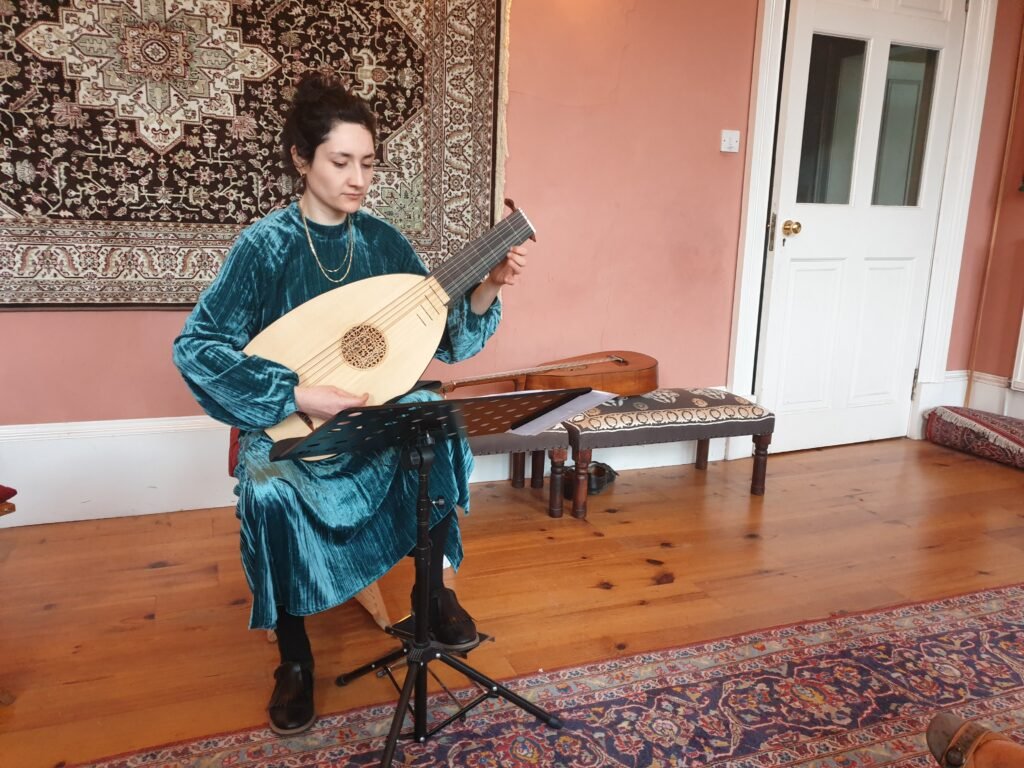
We were delighted to welcome back Sara Salloum as our guest to give a presentation and
update us on her PhD project. Sara’s research is a practice-led study focusing on women
lutenists and lute books owned by women in 17th century England. We were treated to an
extensive program beginning with four “Toys” from the Pickering Lute Book. These pieces
are described by Sara as “unpretentious” and live up to their name as playful pieces. Sara also
wanted to highlight some other pieces which were written by, inspired by and preserved by
women of the time. In their day, women such as Margaret Board and Jane Pickering would
have had no idea of the important roles they would play in composing, writing down and
saving these pieces which we still revere centuries later. Sara played beautifully, as always,
but we were also fascinated by her plans for the presentation her final project. As some of the
original books and manuscripts she is focusing on are personal compilations of music,
sometimes written and set by others, the original books are analogous to “mix tapes”.
Therefore, she is planning to record the pieces onto cassette and emulate the Margaret Board
book cover on the case art which, unlike a CD, has the proportions of a book. Sara also
described how she is going to make a video of her playing these pieces whilst in 17th century
costume. The importance of making the environment as close as possible to what someone
like Margaret Board would have experienced led Sara to investigate “Bessie Surtees House”
in Newcastle so she would be able to recreate a suitable room at home, complete with suitor.
We wish Sara all the best as the end of her research nears and we look forward to being able
to buy copies of her CD when it is ready.
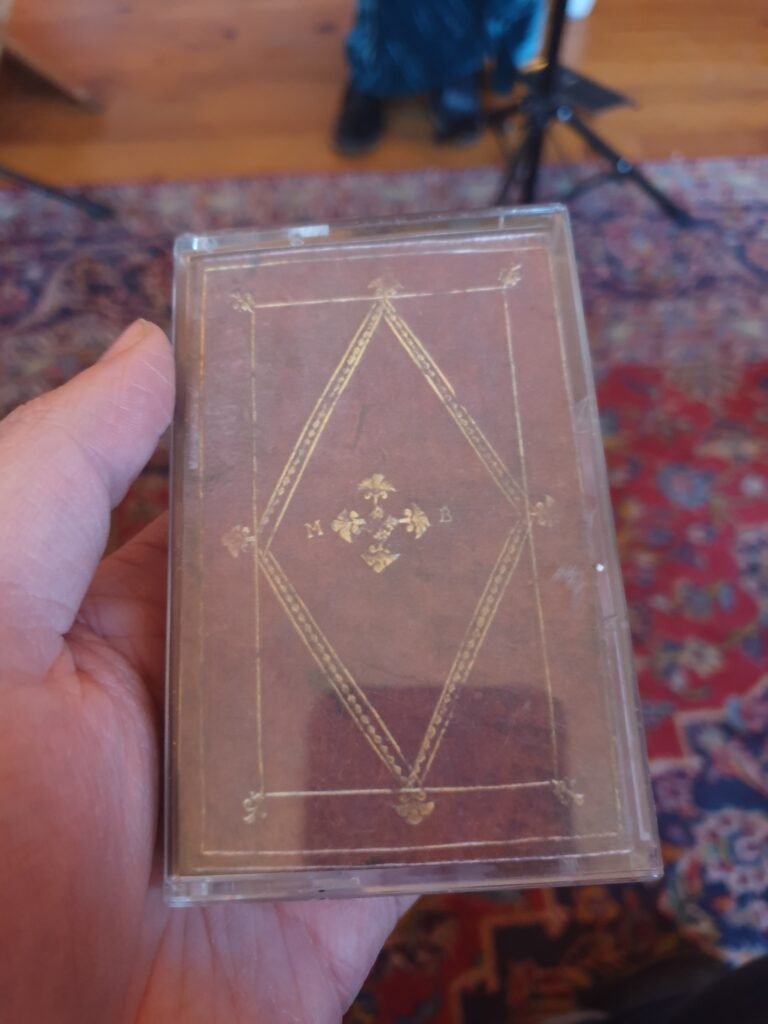
Thank you to all the regulars and new faces who attended, hopefully we will see you again
soon.